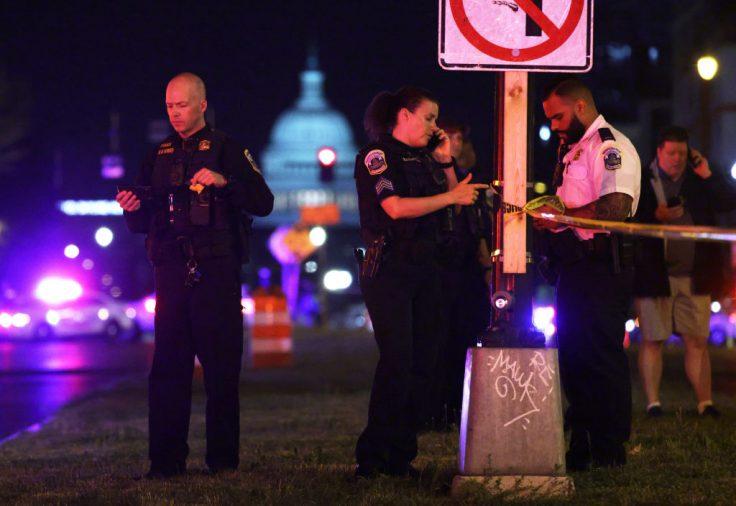WASHINGTON ŌĆö Rising youth crime in the nationŌĆÖs capital has prompted a strong response from the DistrictŌĆÖs U.S. Attorney, who declared that ŌĆ£enough is enoughŌĆØ amid growing concerns over safety and law enforcement challenges. As Washington, D.C. grapples with a surge in juvenile-related offenses, officials and community leaders are intensifying efforts to address the troubling trend that has placed the city under renewed scrutiny. The ongoing debate highlights urgent questions about crime prevention, accountability, and the broader social factors driving youth violence in the nationŌĆÖs capital.
DC US Attorney Condemns Rising Youth Crime Amid Intensifying Public Concern
In a forceful statement, the DC US Attorney has underscored a critical turning point in addressing the spike of youth-related offenses across the nationŌĆÖs capital. Highlighting the unacceptable escalation in juvenile crime rates, officials stress that community safety and trust depend on immediate and decisive actions. The attorney firmly declared, “enough is enough,” signaling a zero-tolerance approach toward violent and property crimes perpetrated by young offenders. This stance arrives amid mounting pressure from residents and local leaders advocating for enhanced law enforcement resources and preventive programs.
Authorities are pushing for a multifaceted strategy that includes:
- Targeted intervention programs aimed at at-risk youth to divert them from criminal activity.
- Increased collaboration between law enforcement, schools, and community organizations.
- Stricter prosecution policies to hold young offenders accountable and deter repeat offenses.
These measures reflect a growing consensus that tackling youth crime requires both punitive and rehabilitative approaches to safeguard neighborhoods while fostering long-term behavioral change.
| Key Crime Statistics (2023) | Percentage Change |
|---|---|
| Juvenile Assault Cases | +18% Increase |
| Property Crime Involving Youth | +12% Increase |
| Youth Participation in Gang Activity | +22% Increase |
Analyzing Root Causes Behind Surge in Juvenile Offenses in the NationŌĆÖs Capital
The surge in juvenile offenses in the nationŌĆÖs capital is multifaceted, rooted in both socioeconomic challenges and systemic gaps within the community. Experts point to the growing disparities in education access and economic opportunity as significant contributors. Many young individuals face unstable home environments, limited after-school programs, and inadequate mental health support, creating fertile ground for delinquent behavior. Additionally, the pandemicŌĆÖs prolonged impact has exacerbated feelings of isolation and frustration among teens, amplifying tensions and incidents of youth crime.
Law enforcement officials and social workers alike emphasize that addressing these root causes demands a comprehensive approach. Critical areas identified include:
- Improving education funding, especially in under-resourced neighborhoods.
- Expanding community outreach programs focused on mentorship and conflict resolution.
- Enhancing mental health services tailored for at-risk youth.
- Strengthening family support networks through targeted social services.
| Factor | Impact on Juvenile Crime |
|---|---|
| Economic Inequality | Limits access to resources and opportunities |
| Educational Gaps | Reduces engagement and increases dropout rates |
| Mental Health Issues | Unaddressed emotional problems lead to risky behavior |
| Lack of Supervision | Creates opportunities for involvement in crime |
Impact of Escalating Youth Crime on Community Safety and Local Governance
The rising tide of youth crime in the nationŌĆÖs capital has unleashed profound challenges for both community safety and the capacity of local governance to respond effectively. Neighborhoods once considered safe havens are now grappling with the unsettling reality of increased juvenile involvement in violent incidents, theft, and vandalism. Residents report heightened anxiety, leading to diminished public trust in local authorities to maintain law and order. The escalation has not only strained police resources but has also exposed the vulnerabilities in community-based prevention programs and social services designed to support at-risk youth.
Local officials are under mounting pressure to implement robust strategies that prioritize both law enforcement and rehabilitation, balancing immediate public safety with long-term social solutions. The fractured collaboration between various city agencies has hampered swift responses, highlighting the need for a coordinated, multi-disciplinary approach focusing on:
- Strengthening community-police relations through transparency and engagement.
- Expanding youth outreach programs targeting education, employment, and mental health support.
- Instituting data-driven policing to forecast and prevent high-risk activities.
- Enhancing resource allocation for juvenile justice reform and diversion initiatives.
| Key Metrics | 2019 | 2023 |
|---|---|---|
| Youth Violent Crimes Reported | 1,200 | 2,100 |
| Community Outreach Programs | 15 | 9 |
| Juvenile Arrests | 980 | 1,850 |
| School-based Interventions | 20 | 12 |
Strategic Policy Recommendations to Curb Juvenile Delinquency and Restore Order
To effectively address the surge in juvenile crime within the nation’s capital, policymakers must implement a multifaceted approach prioritizing prevention and rehabilitation over mere punishment. Enhancing community engagement programs that foster positive youth development can establish a foundation for long-term behavioral change. Key initiatives should include:
- Expanding after-school activities to provide constructive outlets and mentorship opportunities
- Increasing funding for mental health services tailored to at-risk youth
- Strengthening family support systems through education and resource access
- Implementing restorative justice programs that encourage accountability and reconciliation
In parallel, law enforcement agencies must recalibrate their strategies to balance enforcement with community trust-building. Prioritizing targeted interventions over broad punitive measures can improve public safety while safeguarding youthsŌĆÖ potential for reintegration. The table below outlines key areas for strategic investment, highlighting potential impacts:
| Strategic Area | Investment Focus | Expected Outcome |
|---|---|---|
| Community Programs | After-school & Mentorship | Reduced Recidivism |
| Healthcare | Youth Mental Health Clinics | Improved Behavioral Health |
| Law Enforcement | Targeted Intervention Teams | Heightened Safety & Trust |
| Education | Parental Support & Training | Stronger Family Units |
In Conclusion
As Washington D.C. grapples with a surge in youth-related crime, the call from the U.S. attorney to take a firmer stance underscores the urgency of the situation. With community safety at stake, authorities and residents alike are watching closely to see how law enforcement and local leaders will respond to this growing challenge. The coming months will be critical in shaping the cityŌĆÖs approach to curbing violence and restoring a sense of security in the nationŌĆÖs capital.




